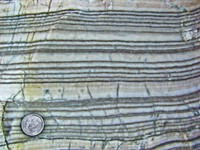Advertisement
Grab your lab coat. Let's get started
Welcome!
Welcome!
Create an account below to get 6 C&EN articles per month, receive newsletters and more - all free.
It seems this is your first time logging in online. Please enter the following information to continue.
As an ACS member you automatically get access to this site. All we need is few more details to create your reading experience.
Not you? Sign in with a different account.
Not you? Sign in with a different account.
ERROR 1
ERROR 1
ERROR 2
ERROR 2
ERROR 2
ERROR 2
ERROR 2
Password and Confirm password must match.
If you have an ACS member number, please enter it here so we can link this account to your membership. (optional)
ERROR 2
ACS values your privacy. By submitting your information, you are gaining access to C&EN and subscribing to our weekly newsletter. We use the information you provide to make your reading experience better, and we will never sell your data to third party members.
Environment
Carbon Dioxide Decline Linked To Ancient Glaciation
Analysis of algae-produced organic compounds indicates greenhouse gas’s role in tipping climate change 35 million years ago
by Elizabeth K. Wilson
December 5, 2011
| A version of this story appeared in
Volume 89, Issue 49
Carbon isotope ratios in algae-produced organic compounds provide evidence that 35 million years ago a dramatic decline in atmospheric carbon dioxide levels spurred Antarctic glaciation (Science, DOI: 10.1126/science.1203909). The idea of linking a drop in atmospheric CO2 with glacier growth from the subsequent global cooling has been controversial and difficult to substantiate. Yale University’s Mark Pagani and colleagues extracted alkenones—long-chain unsaturated ethyl and methyl ketones produced by ancient ocean algae—from seafloor sediment cores and analyzed the molecules’ 13C to 12C ratios. These ratios provide a fingerprint of the atmospheric CO2 levels present when the algae produced the alkenones via photosynthesis. The analysis by Pagani’s team suggests that atmospheric CO2 decreased just before Antarctic ice shelves started forming. “Onset of Antarctic glaciation reflects a critical tipping point for Earth’s climate and provides a framework for investigating the role of atmospheric CO2 during major climatic change,” the researchers conclude.




Join the conversation
Contact the reporter
Submit a Letter to the Editor for publication
Engage with us on Twitter